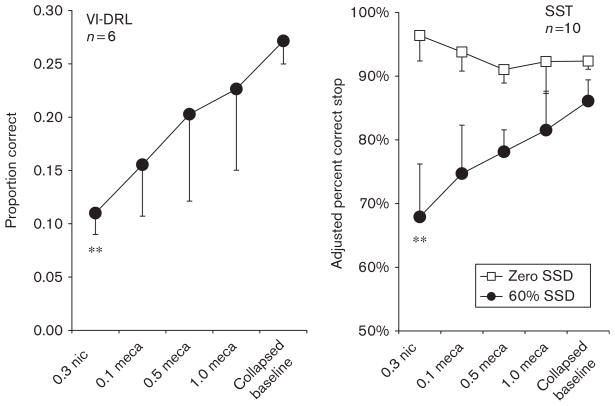Fig. 4.
Results from experiment 2, variable-interval differential-reinforcement-of-low-rate (VI-DRL) schedule and stop-signal task. The figures depict mean proportion (VI-DRL) or percent (stop-signal task) inhibition across the range of nicotine (nic)+saline or nicotine+mecamylamine (meca) combined doses. No differences were evident between 1.0 mg/kg mecamylamine-only and saline-only conditions; therefore, data from all saline administrations and the saline+1.0 mecamylamine condition were combined to form the ‘collapsed baseline’ condition. For both tasks, the addition of mecamylamine attenuated the disinhibiting effects of 0.3 mg/kg nicotine in a dose-dependent manner. For the VI-DRL schedule, the addition of mecamylamine to nicotine also introduced greater variability. SSD, stop-signal delay. **P<0.01.

